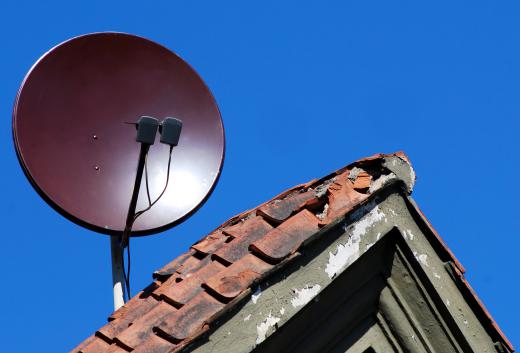What is a Paraboloid?
A paraboloid is a particular kind of three-dimensional surface. In the simplest case, it is the revolution of a parabola along its axis of symmetry. This kind of surface will open upwards in both sideways dimensions. A hyperbolic paraboloid will open upward in one dimension and downward in the other, resembling a saddle. Like in a two-dimensional parabola, scaling factors can be applied to the curvature of a paraboloid.
To understand how a paraboloid behaves, it is important to understand parabolas. Indeed, some cross sections of a paraboloid will form a parabola. The equation y = x2 will form a parabola in a standard coordinate system. What this equation means is that the distances of a point on this line from the x- and y-axes are always going to have a special relation to each other. The y value will always be the x value squared.

If one revolves this line around the y-axis, a simple circular paraboloid is formed. All vertical cross-sections of this surface will open up in the positive y direction. It is possible, however, to form a hyperbolic paraboloid that also opens downward in the third dimension. Vertical cross sections in this case will have one half of their parabolas opening in the positive direction; the other half will open in the negative direction. This surface of a hyperbolic paraboloid will resemble a saddle and is called a saddle point in mathematics.
One application of the paraboloid surface is the primary mirror of a reflecting telescope. This kind of telescope reflects incident light rays, which are nearly parallel if they come from very far away, to a smaller eyepiece. The primary mirror reflects a large amount of light to a smaller area. If a circular mirror is used, reflected light rays will not perfectly match up at a focal point; this is called spherical aberration. Though more complicated to make, parabolic mirrors have the geometry required to reflect all light rays to a common focal point.
For the same reason as in the parabolic mirror, satellite dishes commonly use a concave parabolic surface. Microwave signals sent from orbiting satellites are reflected off the surface toward the dish’s focal point. A mounted device called a feedhorn then collects these signals for use. Sending signals operates in a similar way. Any signal sent from the focal point of a paraboloid surface will be reflected outward in parallel rays.
AS FEATURED ON:
AS FEATURED ON:











Discuss this Article
Post your comments